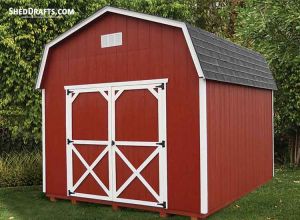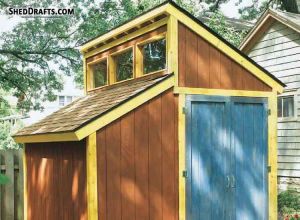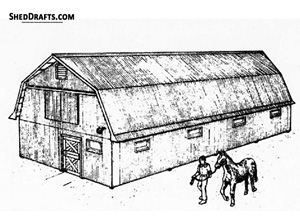
The first step in building your shed is to select the most suitable placement location.
This could be more challenging than you may initially assume. Local zoning laws play a significant role in deciding which construction site is appropriate, and so does the ease of access, aesthetics, and weather.
To pick the best building site for your shed, you must look at the critical factors below.
Minimum Setback Distance Requirements

Every town or county has its own ordinances about how far the shed must be from certain structures or areas.
You will need to maintain the minimum setback distances from all of the below things.
- Power lines
- Septic tanks
- Streets
- Wetlands
- Property lines on all four sides of your land
Get in touch with the local building council and find out about all the relevant bylaws regarding setback distances. This will prevent a lot of inconveniences later on if you discover you need to get a permit for construction.
Avoid Wet Soil, Utility Lines, And Annoyed Neighbors
Not all soil on your land has equal water drainage. There may be some low-lying areas where water tends to collect during rains or when the snow thaws. If you build in such places, your foundation will quickly rot away. Pick a site that is level, high, and rarely gets muddy.
Underground utility lines may be running through your property, and you may not be aware of all of them. Be sure to contact all the utility companies before you finalize your site and start digging.
Trees can be a hazard to your building, especially during bad weather. Verify that there is at least a few feet of distance from your shed and the nearest trees. This also makes it easier to approach your shed and do maintenance in the future.
If you have neighbors who can see your property from their homes, it may be a good idea to notify them in advance about your building. While this isn’t a legal requirement, you can avoid a lot of future unpleasantness by talking about your planned shed location with your neighbors.
Will your shed be visible from your bedroom or dining room? Do you want to admire it anytime you look out the window? Is it blocking a scenic mountain view? Think of all these questions when picking the site. Your shed can permanently alter the view from your home windows, so select a location accordingly.
Get Most Sunlight and Manage Winds

Moisture is your shed’s worst enemy, and sunlight is its best friend. Sunlight slows down wood from rotting and prevents mold and mildew from growing on your shed.
Sunlight also lights up the inside of your shed and keeps it warm and cozy.
The sun’s location in the sky at noon changes as the seasons change. So the north face of your shed may not always be illuminated, but the south face will receive much more sunlight.
Align your shed such that the largest doors and window point southward.

Winds provide natural ventilation to your shed and also keep your shed cool during summer. Align the shed such that the shorter side of the building faces the direction of the prevailing winds.
Easy Accessibility
If you build your shed too far from your home, it can be quite a trek each time you wish to put in or take something out of the shed. Other members of your house are less likely to use the shed if they have to walk a long distance. This may be fine if you just plan on storing lawn equipment in the shed or using it for potting or woodworking once in a while.
But if you plan on using the shed quite frequently, and want others to use it to store their sports gear, bikes, etc., then it is better to build it closer to home.
Get Your Construction Permit First
After you’ve finalized your shed’s future location, check with your local building department if you require a permit before you start construction. If you end up needing one, then a building inspector will personally visit your land and check the building site.
In case of some reason why that part of your land can’t be approved, then a more suitable plot on your property will be recommended by the inspector.




















